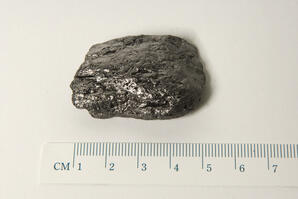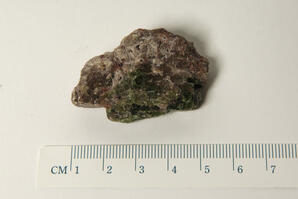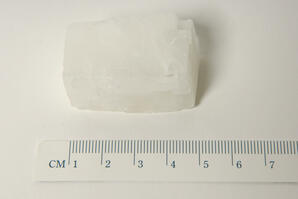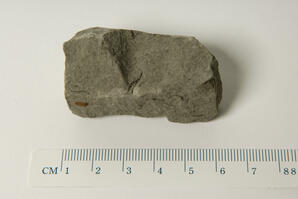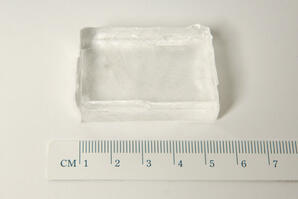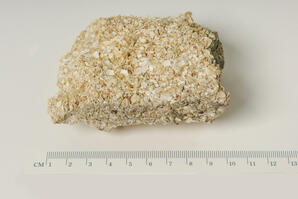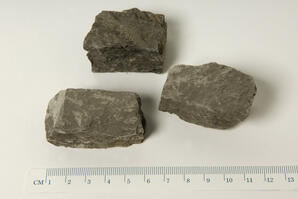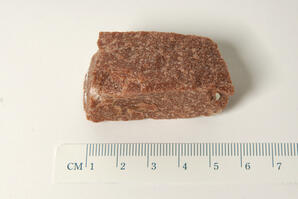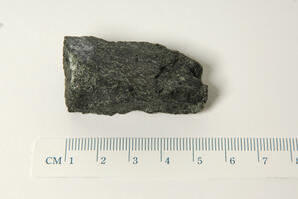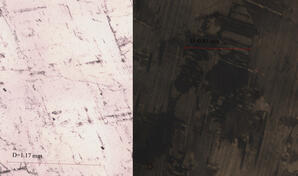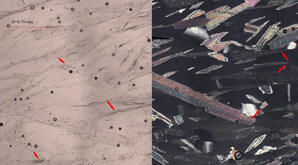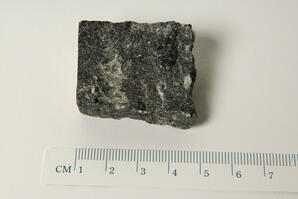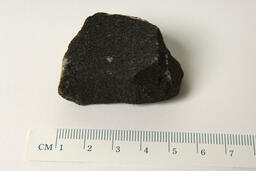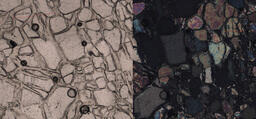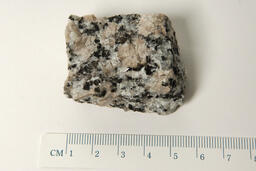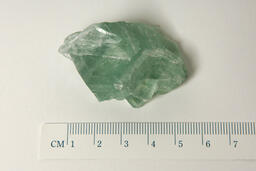Image
Common Forms/Occurrences: Principally occurs in metamorphic rocks ie. Crystalline limestones, schists, and gneisses or in hydrothermal veins Useful Identification Test: Opaque, relatively soft, non magnetic, and foliated Chemical formula: C Crystal…
Image
Common Forms/Occurrences: Widely distributed as accessory mineral (all classes of rocks) Useful Identification Test: Soluble in HNO3 or HCl Chemical formula: Ca5F(PO4)3 Crystal System: Hexagonal prisms Colour: Pale green or dark green, brown, blue,…
Image
Common Forms/Occurrences: Found in limestone, chalk, travertine, and onyx Useful Identification Test: Effervesces in dilute HCl Chemical formula: CaCO3 Crystal System: Prisms, rhombohedrons, or scalenohedrons that break into rhombohedrons Colour:…
Image
Texture (grain size, shape, sorting): Breaks into blocks or layers Composition (detrital, biochemical, chemical): Detrital sediment grains; derived from the mechanical and chemical weathering of continental rocks, which are comprised mostly of…
Image
Common Forms/Occurrences: Occurs as extensive beds and irregular masses formed by evaporation of enclosed bodies of sea water Useful Identification Test: Salty taste; Chemical formula: NaCl Crystal System: Forms cubes and octahedrons Colour:…
Image
Texture (grain size, shape, sorting): Mostly sand-sized shell fragments; often contains a few larger whole fossil shells Composition (detrital, biochemical, chemical): Biochemical sediment grains; shells and shell/coral fragments, and/or calcareous…
Image
Texture (grain size, shape, sorting): Fissile (splits easily into layers); no visible grains Composition (detrital, biochemical, chemical): Detrital sediment grains; derived from the mechanical and chemical weathering of continental rocks, which are…
Image
Mineralogical Composition: Quartz sand grains fused together; grains will not rub off like sandstone, usually light colored Texture (grain size, shape, sorting): Fine to coarse grained; Nonfoliated Metamorphic grade: High Precursor rock: Sandstone…
Image
Common Forms/Occurrences: Found as blocky crystals in basalts, gabbro, and andesites Useful Identification Test: Insoluble in HCl Chemical formula: calcium ferromagnesian silicate Crystal System: Short, 8-sided prisms Colour: Dark green to gray…
Image
Key Characteristics: Low relief, colorless nature, polysynthetic twinning and oscillatory zoning are diagnostic of plagioclase 2V: 2Vx = 45 - 102° Relief: Low negative or positive relief Cleavage: Cleavages intersect at 93 °, usually not observed in…
Image
Key Characteristics: The mineral's lack of color, bird's eye extinction and high birefringence are all diagnostic 2V: 2Vx = 28 - 47° Relief: Moderate positive relief; Small change in relief upon stage rotation Cleavage: One perfect…
Image
Texture (grain size, shape, sorting): Fine to coarse grained Composition (detrital, biochemical, chemical): Mineral crystals (inorganic) or chemical residues (eg. Rust); microcrystalline dolomite Other distinctive properties: Usually light coloured…
Image
Mineralogical Composition: Talc; can be scratched with your fingernail; shades of green, gray, brown, white Texture (grain size, shape, sorting): Fine grained; Nonfoliated Metamorphic grade: High Precursor rock: Basalt, Gabbro, or Ultramafic igneous…
Image
Common Forms/Occurrences: Widely distributed in mountian belts and deeply eroded shield areas of continental crust Useful Identification Test: Optically negative character and large optical axial angle and extinction angle Chemical formula: calcium…
Image
Mineralogical Composition: Mafic; Plagioclase Feldspar, Olivine, Pyroxene, Amphibole Texture (extrusive/intrusive): Extrusive; Aphantic: fine-grained Other distinctive properties: Gray to black; Found in metamorphic belts and rapidly cooled lava…
Image
Common Forms/Occurrences: Found in ultramafic igneous rocks and marbles formed from metamorphosed limestone Useful Identification Test: Gelatinizes in HCl Chemical formula: (Fe,Mg)2SiO4 Crystal System: Short crystals that may resemble sand grains…
Image
Common Forms/Occurrences: Present in most igneous and both regional and contact metamorphic rocks Useful Identification Test: Transparent to translucent Chemical formula: K(Mg,Fe)3(Al,Si3O10)(OH,F)2 Crystal System: Very short prisms that split…
Image
Common Forms/Occurrences: Common K-feldspar of pegmatites and hydrothermal veins; Prominent in granites Useful Identification Test: Demonstrates "tartan" twinning Chemical formula: KAlSi3O8 Crystal System: Translucent prisms with…
Image
Key Characteristics: Low relief, colorless nature, undulatory extinction and uniaxial character are diagnostic 2V: n/a Relief: Low positive relief Cleavage: None Colour and Plechroism: Colorless in thin section Optical Orientation: Undulatory…
Image
Key Characteristics: The high relief, lack of cleavage, crystal form and high birefringence are all diagnostic 2V: 2Vx = 46 - 98° Relief: High positive relief Cleavage: Cleavage not visible in thin section; Grains are commonly fractured and display…
Image
Mineralogical Composition: Felsic; Muscovite, Quartz, Potassium Feldspar, Plagioclase Feldspar, Amphibole, Biotite Texture (extrusive/intrusive): Intrusive; Phaneritic: coarse-grained Other distinctive properties: Pink to dark gray and even black;…
Image
Common Forms/Occurrences: Common in dolomites and limestones Useful Identification Test: Soluble in H2SO4 with evolution of HF; slightly soluble in HCl Chemical formula: CaF2 Crystal System: Usually cubes Colour: Colourless, purple, blue, gray,…
Image
Mineralogical Composition: Felsic; Muscovite, Quartz, Potassium Feldspar, Plagioclase Feldspar, Amphibole, Biotite Texture (extrusive/intrusive): Extrusive; Aphantic: fine-grained Other distinctive properties: Light coloured, pink, gray; Found as…
Image
Mineralogical Composition: Intermediate; Quartz, Potassium Feldspar, Plagioclase Feldspar, Pyroxene, Amphibole, Biotite Texture (extrusive/intrusive): Extrusive; Aphantic: fine-grained Other distinctive properties: Dark gray to black; Found at…

